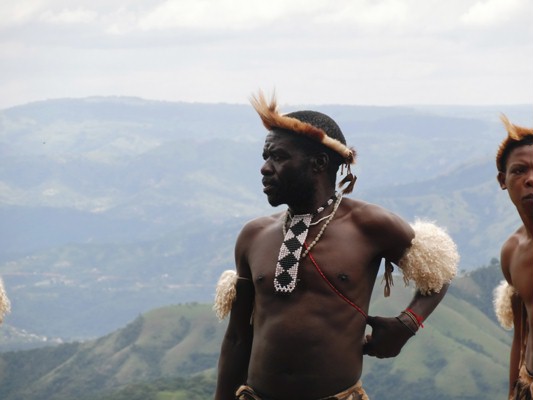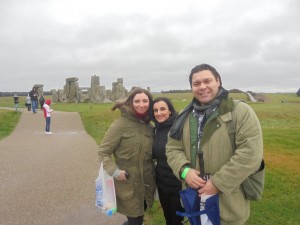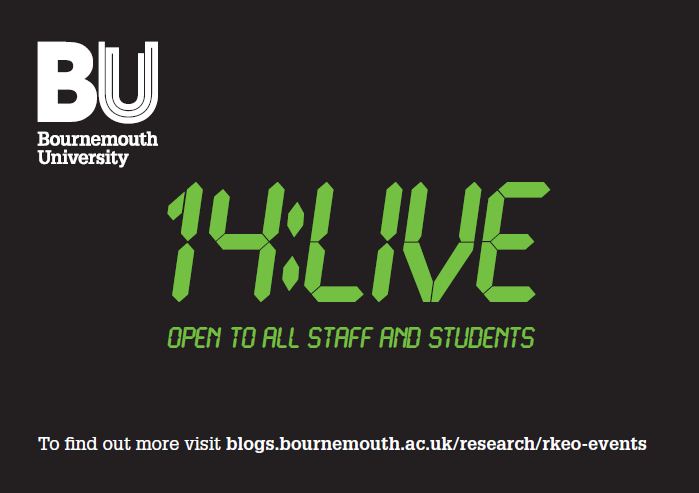The Knowledge Exchange and Impact Team (fondly known to us as KEIT) is a relatively new team within RKEO. KEIT is made up of an enthusiastic group of people working to ensure that BU’s research and knowledge is informed by society for the benefit of society on a number of cross institutional projects such as the Festival of Learning and HEIF-5 funded initiatives, amongst many others!

A busy month for KEIT has seen the public engagement team run Café Scientifique on Tuesday 7th April, Dr James Dyke from Southampton University came to Café Boscanova and gave a brilliant talk on ‘Is humanity really in the existential danger zone’. The team have also seen the launch of a new public lecture series, with the support of the U3A. Attendees provided positive feedback and were extremely keen to interact with the talks throughout the day. This event had a great variety of speakers on topics such as health, exercise, nutrition and more.
We now have 5 live Knowledge Transfer Partnerships and are recruiting candidates to work with our academics and interested businesses. The KTP Academic Development Scheme cohort 2 started last week, kicking off with a development day on KTP. The next KTP submission deadline is this week and we already have 2 submissions from Science & Technology and are looking forward to receiving more!
KEIT have managed to communicate our fantastic research across many channels, including an article on Dr Sally Reynolds’ research, featured in Dorset Magazine, entitled ‘how have landscapes shaped human evolution?’ BU also featured a profile piece in International Innovation, a magazine run by Research Media. Another publication for BU to be proud of is Bournemouth Echo publishing one of our research articles from the BRC, click here to read that article on Dr Kevin McGhee’s research on ‘Could fruit flies hold key to understanding schizophrenia?’.
Our student engagement programme has seen events take place over the last month, with 14:Live taking place on the 24th March. Professor Matthew Bennett gave an amazing talk on ‘Walking the Landscape: Footprints, Human Evolution and Forensic Science’. The Research Photography Competition saw a great number of high quality images submitted to the competition. Voting has now closed and the winner and runners up will be announced shortly.
An article was published in the student newspaper The Rock highlighting some of the research Dr Julie Kirkby is undertaking, which explores how children with dyslexia are affected when reading classroom boards. This article was posted on BU news and was the number one news item and was also picked up by a number of websites.
BU’s HEIF projects received a massive boost with the news that three projects have received funding, including Destination FeelGood and a project from the Faculty of Science and Technology to look into software development for research. Another success of a HEIF funded project, The Wessex Portal is to host the event Wessex Conservation forum twice a year after the success of the first event.
The Research & Knowledge Exchange Office have also been developing the Interdisciplinary Research Week which will take place from 11th-15th May 2015. The talks have been scheduled and we are now actively promoting the event. There are many exciting events taking place over the course of the week and you can find a full list of everything that is taking place, from engaging speakers to exciting topics here.
If you’re feeling inspired by our blog post and would like to get involved with some of our projects then feel free to get in touch:
Rebecca Edwards – Knowledge Exchange and Impact Manager
Rachel Bowen – Research Communications Manager
Rachel Clarke – Knowledge Exchange Adviser (KTP)
Jayne Codling – Knowledge Exchange Adviser
Naomi Kay – Public Engagement Officer
Harry Gibson – Public Engagement Event’s Organiser
Sam Squelch – Student Engagement Coordinator
To find out more about us and what we do, take a look at our team page.




















 Second NIHR MIHERC meeting in Bournemouth this week
Second NIHR MIHERC meeting in Bournemouth this week Dr. Ashraf cited on ‘Modest Fashion’ in The Guardian
Dr. Ashraf cited on ‘Modest Fashion’ in The Guardian NIHR-funded research launches website
NIHR-funded research launches website MSCA Postdoctoral Fellowships 2025 Call
MSCA Postdoctoral Fellowships 2025 Call ERC Advanced Grant 2025 Webinar
ERC Advanced Grant 2025 Webinar Horizon Europe Work Programme 2025 Published
Horizon Europe Work Programme 2025 Published Horizon Europe 2025 Work Programme pre-Published
Horizon Europe 2025 Work Programme pre-Published Update on UKRO services
Update on UKRO services European research project exploring use of ‘virtual twins’ to better manage metabolic associated fatty liver disease
European research project exploring use of ‘virtual twins’ to better manage metabolic associated fatty liver disease